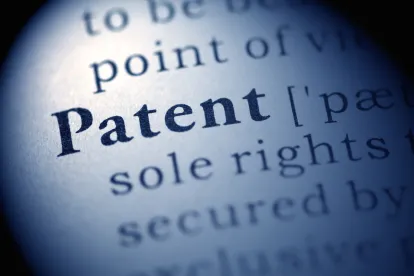One lesson that was reinforced over the past 14+ months is that an effective branding strategy is vitally important when the avenues for customer engagement are limited. In my recent Innovation to Production series webinar this past spring, I reviewed some thoughts regarding trademark strategies since I was fielding a number of questions about them and related topics. Below are some strategies that companies can employ with respect to their trademark adoption and clearance processes. This is in the context of general U.S. laws and practice, but feel free to contact me to discuss international aspects.
Brand vs. Trademark
Before we discuss trademark adoption strategies, I think it would be helpful to better understand the difference between these two terms since they are commonly used interchangeably.
A brand is your corporate image that helps to identify the company and its products or services. It is built over time as a reputation of quality in the minds of customers. A brand may consist of a number of elements, such as: identity, image, personality, character, culture, essence, reputation, etc.
A trademark legally protects elements of your company’s brand that are unique. Trademarks commonly will be words, phrases, symbols, logos, trade dress, product configuration, colors or combinations of these elements.
Therefore, a trademark is but one aspect of a company’s brand.
Trademark Adoption
Here is a fact pattern that I commonly encounter: Development of a new product or service is going well and the product or service will be clearly going to market. It is time to get marketing re-engaged to develop the branding in order to sell as much of the product or service as possible. After initial brainstorming and deliberations, marketing comes to you with two proposed marks: one immediately identifies the product or service in some way, and the other is unrelated to the product or service (one might say that it fails to describe, suggest or identify the product or service in any way). Which would or should you choose?
Recall that a trademark helps to prevent competitors from stealing the brand image or creating substantially similar identities that create marketplace confusion. Further, it should probably come as no surprise that there is a spectrum of distinctiveness of trademarks with strong, distinctive trademarks on one end, and weak, non-distinctive trademarks on the other end. The strength of any trademark rests solely on its ability to distinguish itself from others.
So, what are strong and distinctive trademarks?
Fanciful, arbitrary, and suggestive trademarks are the strongest and most distinctive types of trademarks and entitled to the most protection. These types of trademarks are referred to as inherently distinctive.
Fanciful trademarks are truly unique. These are words that were created solely for use with the brand. There is no definition or industry use prior to creation or registration, which is what makes it so distinctive. Fanciful trademarks provide the most protection against infringement because it is very difficult to claim accidental infringement or prior use of a truly unique identifier. Consumers immediately link a fanciful trademark to a specific product or service.
Examples of some fanciful trademarks: Lexus®, Rolex®, Xerox®, Clorox®, Exxon®, Kodak®, Pepsi®
Arbitrary trademarks are not unique, but rather a word or image that already exists, but has nothing to do with the products or services with which it is used. There is nothing about the words that intrinsically describes or even suggests a feature or other aspect of the products or services being offered, which is what defines an arbitrary trademark.
Examples of some arbitrary trademarks: Amazon®, Apple®, Camel®, Coach®, Dove®, Shell®
Suggestive trademarks are not unique. They have some association to the product or service at issue, but it is not immediately clear. Suggestive product identifiers do not directly describe a quality or characteristic of a company, product or service. Rather, they use terms or designs that “suggest” specific qualities and traits.
Suggestive trademarks require consumers to use their imaginations to make the mental connection between trademark and a company, brand, product or service.
Examples of some suggestive trademarks: Jaguar® (suggests cars that are very fast), Coppertone® (suggests resulting skin tone after using), Greyhound® (suggests fast travel), Airbus® (suggest buses for the air), Microsoft® (suggests software for small computers)
So what are weak and non-distinctive trademarks?
Descriptive and generic trademarks are weak and not inherently distinctive.
Descriptive trademarks only identify a characteristic of the product or service in some way. Trademarks that are descriptive are capable of acquiring trademark rights through lengthy, continuous and exclusive use in commerce. However, this takes time, during which competitors may quickly adopt a similar mark, against which it is usually difficult to enforce and stop the competitor.
Descriptive trademarks tell consumers about the nature or quality of the products or services, but suggestive trademarks require imagination, thought or perception to determine the nature or quality of the goods.
Examples of some descriptive trademarks: Super-Cushion®, Corporate & Incentive Travel®, In-Print-Forever®, Burgers & Half Bottles®, Remote Coach®, The Sliding Door Experts®
Generic expressions aren’t trademarks at all and are unprotectable. Since they describe common terminology for specific industries, these terms can be used freely by any brand in the development, marketing, promotion, and other aspects of creating and selling its products or services.
Examples of some generic expressions: adhesive bandages (rather than Band-Aid®), inline skates (rather than Rollerblade®), flying disc (rather than Frisbee®), slow cooker (rather than Crock-Pot®), lip balm (rather than Chapstick®)
Trademark Clearance
There is no legal requirement to conduct a search before the adoption and use of a trademark. However, I recommend, as best practice, to perform at least a preliminary or knock-out search, and in some instances a full or comprehensive search.
A high-level discussion regarding basic search and clearance strategies follows. Since there is a considerable amount of variables that could be developed in many aspects, if there is a specific situation that you wish to discuss, please contact me.
Why should a search be performed?
A trademark search helps determine if: the mark is available for use; the mark can be registered; and the potential strength of the mark.
A trademark search also helps: identify risks; reduce costs; avoid litigation; expedite prosecution of application; neutralize intent factor in the likelihood of confusion analysis; and insulate against the charge of bad faith and willful infringement.
How should the report on the search be provided?
The report can be provided in oral or written format.
An oral report is commonly provided if there are unfavorable search results, there may be an unwillingness to follow the recommendations of the report or there is a desire to minimize costs.
Obviously, the written report serves as a memorialization of the search effort and the analysis of the results.
What type of search should be performed?
As mentioned, commonly performed searches are referred to as preliminary or knock-out vs full or comprehensive. However, since costs are usually a concern, businesses should consider some questions regarding their trademark search investment. Here are some common ones:
How central or important is the product to the business?
Is the proposed mark a house mark for a wide range of goods and services, or a sub-brand to be used for a short time?
Is the proposed mark a brand new mark, or a variation on an existing mark in which the business already established goodwill?
Is the proposed mark an existing mark that will now be used with new goods in its natural zone of expansion?
A preliminary or knock-out search can be performed in-house in the USPTO and state trademark databases, and the Google search engine. The scope is directed to identical marks; obvious spelling variations; same international class of goods/services; and similar goods/services.
A full or comprehensive search is performed in additional databases, including business name directories, trade directory databases, domain names, etc. The scope is directed to identical marks, phonetic equivalents, plural forms, reversed terms, similar character strings, similar word formatives, similar look, sound and/or meaning, similar length, acronyms/word equivalents; and identical goods or services, related goods or services and identical or nearly identical marks with unrelated good or services.
Since each search and the associated results are highly fact-specific, in the interest of time, I am going to stop here and not dive into the analysis factors of the results. Perhaps that can be the subject of another micro-webinar or article, if there is interest.
Here are 4 strategies for better trademarks and branding:
1. All trademarks are brands, but not all brands are trademarks.
2. Strong brands make good competitors. Resist the urge to describe your products or services if you want to build goodwill and value.
3. Using a trademark to immediately identify the products or services in some ways can help build consumer recognition in the beginning, but does very little to protect a business from a legal perspective.
4. Search before you leap. This is your opportunity to reduce the risk of potential litigation and its associated costs and distractions.
In conclusion, a more thoughtful or nuanced approach to trademark adoption and brand build-out will result in long-term goodwill growth and bottom line value, plus additional valuable assets.



 />i
/>i
